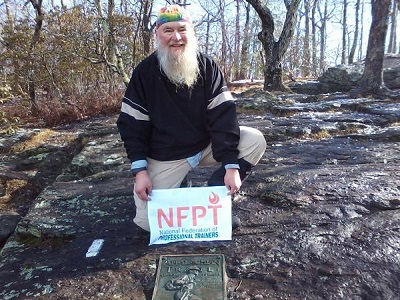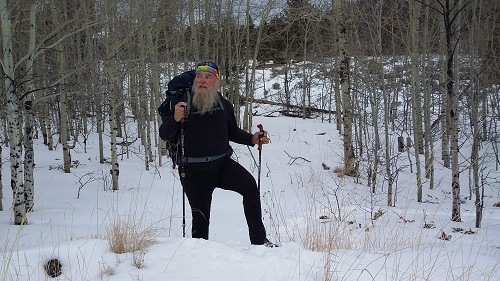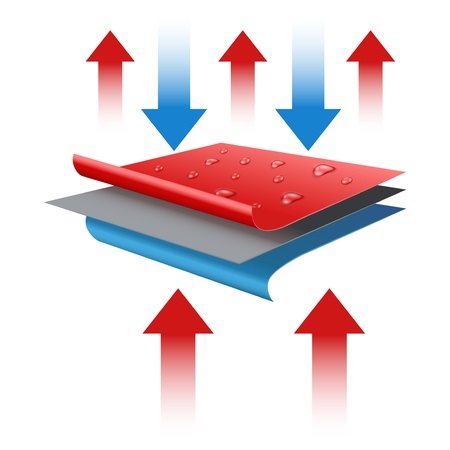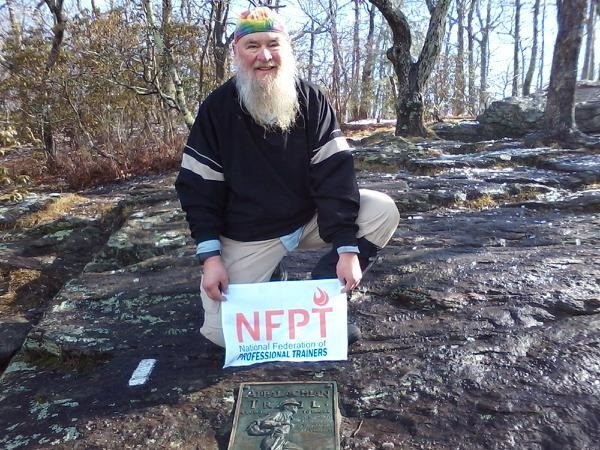 Mentally and Physically Training for the Trail
Mentally and Physically Training for the Trail
I find it difficult to describe the training plan I established to thru hike the Appalachian Trail (AT). As a retired psychotherapist I am a highly conceptual and an insight oriented individual. So, simply stated, I perceive/conceptualize training as the event and the event as continued training. I’ve seen many clients present as open to training but I also see the concurrent thought that training is work and they perceive the event as some type of reward for the work they did. And this separation in concepts – training vs event – is what has led many clients to stop training.
However, in the spirit of this blog I understand most readers are more interested in the behavioral side of the training. In training terms, I used a sports specific training plan accompanied by the proven National Federation of Professional Trainers (NFPT) approach to a push, pull, squat fitness routine.
Respecting Recovery
My personal training plan begins, believe it or not, with addressing the issue of recovery. Not typical huh?? No matter whether I was training in a gym setting or actually hiking I always begin by warming up, typically using basic calisthenics (jumping jacks, toe touches, windmills etc). I even conceptualize the warm up as the beginning of recovery. A warm set of muscles, not only enhances the overall workout, but prevents already tight muscles from getting tighter. I incorporated brief, mild stretching during both cardio and resistance training. Bear in mind, I do the in session stretching to decrease the amount of time I have to stretch post workout. I can assure you I am a post workout stretching advocate. Especially for older clients. Keep in mind I am a trainer/athlete in his 60s.
 Whether training in the gym or hiking I wear compression clothing because I advocate the fact that compression clothing is in a sense a way to recover even while in the middle of the workout or hike. I then sleep, as I will on the trail, in copper infused compression clothing. I’m not suggesting this approach will work for everyone or every older client, but I can tell you it works for me.
Whether training in the gym or hiking I wear compression clothing because I advocate the fact that compression clothing is in a sense a way to recover even while in the middle of the workout or hike. I then sleep, as I will on the trail, in copper infused compression clothing. I’m not suggesting this approach will work for everyone or every older client, but I can tell you it works for me.
Functionally Training for the Trail
When sports specific training, I incorporated several routines in my overall plan. When I trail hiked, I was fully dressed and equipped, the same way I will be dressed and equipped to hike the AT. When highway hiking, I hiked with my athletic weight vest holding 30-40 lbs of weight. I found when hiking with the weight vest I greatly enhanced the development of the small spinal erector muscles that most persons, including trainers, neglect.
It mattered not that I was gym training, highway hiking with weight vest, or actually hiking in the mountains of my beloved Northern Colorado, I daily performed 150 chair squats, 100 standing heel/toe raises, tricep extensions, bicep curls (using kettlebells – never more than 25 lbs). Additionally, I performed 10 minutes plank holding (30 seconds times 20 holds with a full 30 second rest between holds). 
As a trainer and psychotherapist I embrace the idea it begins with the CORE or middle CHAKRA. As a side note, many people asked me, after returning from hiking the Inca Trail, what muscle groups I found most challenged or affected? It wasn’t my legs or my arms – it was my CORE, which as a reminder includes the lower back.
In summary, when I get up on the morning of the 15th of February, my body will perceive I’m about to do what I do everyday, not a six month, 2200 plus mile hike that I’m taking it on. My advice – see your own training as the event and the event as continued training.
 You can “hike” with me via my satellite tracker. Instructions provided in a future post…watch for it, I’m looking forward to you being a part of my journey!
You can “hike” with me via my satellite tracker. Instructions provided in a future post…watch for it, I’m looking forward to you being a part of my journey!
Be well, be fit
No Man Walking
*Starting in January 2016, NFPT, for the first time, featured one of our own Certified Personal Trainers whose sport is Expedition Hiking. We follow his personal life journey that led him to fitness and ultimately to hiking. We share his training regime and then follow him on that adventure along the AT.
The story behind his life’s fitness journey you will find interesting, inspiring and encouraging. Join us as we feature, James “Jim” Holt, MA, CPT, trail name, No Man Walking.
Catch up with Jim’s Journey with these posts that lead up to the big day:
– NFPT Trainer and Expedition Hiker: Follow His Journey on the AT (post #1)
– No Man Walking. My Sedentary Past to My Appalachian Future. (post #2)


